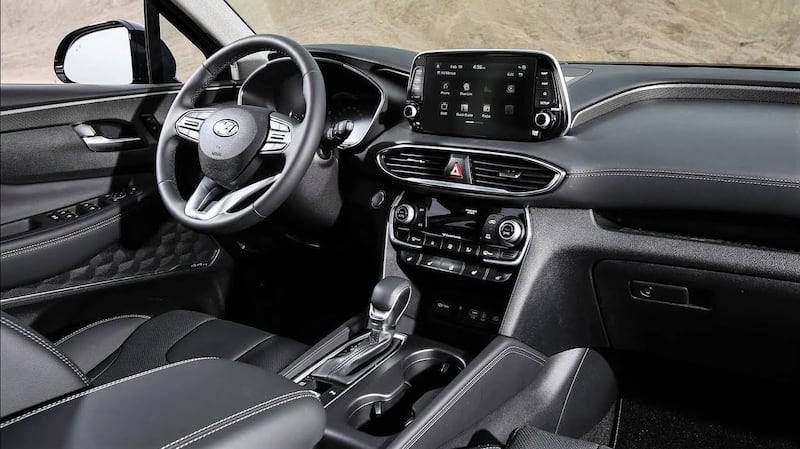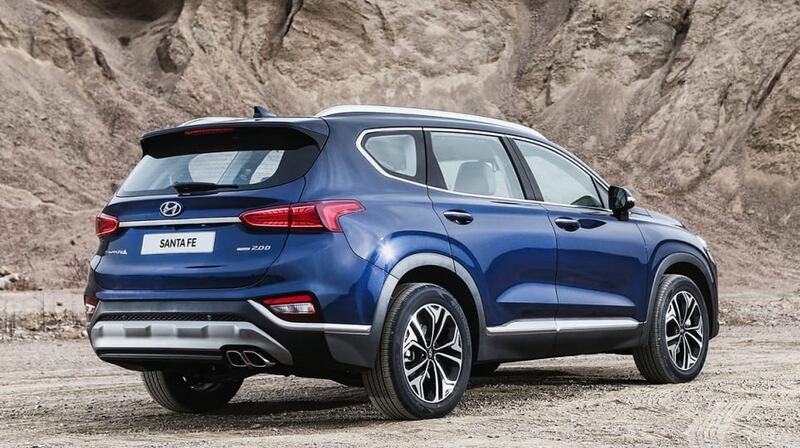Welcome to the latest edition of the holy faith Hyundai. The Korean crossover's moniker may be more of a nod to the New Mexico city and its rugged environs than the Spanish phrase, but sales staff at dealers must be saying a little prayer of thanks for the Santa Fe.
When the history of Hyundai is written – a version by someone not on the company payroll – the Santa Fe will deserve its own chapter. Whatever about models such as the 1990s Coupe or the Trajet family minibus, the Santa Fe put what was an otherwise drab value brand on to the driveways of Europe’s middle-classes when we entered a new century.
If there has been one benefit from the recession, it’s that many consumers hit the reset button on their brand prejudices. At the height of the boom, the pecking order was well-established. Yet after a painful lesson in how loose credit lines can snap tight and strangle you, the public is – hopefully – more astute and appreciative of value. The timing could not have been better for Hyundai, transitioning as it was towards the mainstream.
It's parked in the well-heeled suburbs of Irish towns, comfortably sharing driveways with premium German brands
The Hyundai story is a template of Ireland in the last 25 years. At the turn of the 1990s, cash-strapped buyers bought into the value proposition of its dull but functional cars. Then, as the economy turned, the Hyundai Coupe arrived. It was flash but affordable, and looked far more “powerful” than it actually was, which was a perfect representation of the Irish nation at the time.
By 2001, the SUV craze was in full swing and along came the Santa Fe. Those who had flashed their limited cash on the Coupe were starting out in family life and needed something functional but fashionable. The Korean crossover fitted the bill.
The Santa Fe has always been more than another model from Hyundai: it’s effectively a quasi-premium sub-brand. It’s parked in the well-heeled suburbs of Irish towns, comfortably sharing driveways with premium German brands. These folks don’t say they drive a Hyundai, they refer only to the Santa Fe.
Post recession and the gap between the Santa Fe and the rest of the range has closed. Still, the Santa Fe is further down the road from the rest. It’s that little bit better put together, that little bit more premium in its fit and finish.
New platform
This latest iteration of the model boasts a new platform and a revised diesel engine. A fully-fledged seven-seater, the cabin has been upgraded with a much smarter trim and quality touchscreen controls, to pitch it right in among the best of its rivals.
Power for the Irish market comes from the same 2.2-litre 197bhp diesel that powered the previous model, though Hyundai says it has been incrementally improved in terms of economy and emissions, the latter due to the addition of AdBlue technology.

Our test car was fitted with the firm’s latest eight-speed automatic transmission, a smooth well-programmed affair, whose only fault is that it does tend to change up quite early, even in so-called sport mode. It’s better than the outgoing version though.
Four driver modes are on offer: eco, comfort, sport or smart. In reality while the driver’s binnacle changes colour there is little noticeable difference between the modes and the system doesn’t make any adjustments to suspension or steering inputs. Comfort mode is in the car’s DNA and that’s where most drivers will leave it after playing with the button a few times.
The engineers have done an admirable job of keeping the intrusion of engine noise out of the cabin, so even when starting from cold, or kicking down to overtake, it’s not overly noisy.
Emission levels range from 155 g/km in the two-wheel drive six-speed manual variant to 164 g/m in the range-topping automatic one. That's at the upper end of models in this class, compared to the likes of the Skoda Kodiaq, Peugeot 5008, Nissan X-Trail, or VW Tiguan Allspace. It means the automatic versions slip into a higher tax band, for example, with annual motor tax of €570.
Given that its natural habitat is on short suburban school runs and shopping trips, Hyundai is missing a trick not offering a petrol or hybrid option. Its major rivals offer petrol versions while hybrids are in the pipeline. Hopefully a wider engine range is something that Hyundai Ireland can address in the near future.
Yet for all the perceived kickback against diesel, many buyers still find diesel makes the most sense for their motoring needs right now, so the Santa Fe is unlikely lose out.

In terms of comfort, the Santa Fe copes fine with city roads and between the smart cabin and its relatively smooth responsiveness, it’s a comfortable place to be in traffic. Out on the open road, however, the limitations of the suspension system start to show. On the 19-inch alloys of the Premium Plus version we tested, a lot of the rumble of the road surface makes its way into the cabin. It’s not uncomfortable but it’s simply not as cosseted from the terrain as some rivals. On the smaller 18-inch – or even the entry-level 17-inch – wheels the ride is probably going to be better.
On the positive side, the Santa Fe is surprisingly sharp through the corners, with very little bodyroll. This is probably the trade off for the stiffer ride.
The biggest selling point of these cars, of course, is neither the engine nor the performance: it’s the space. In this regard the seven-seat cabin delivers, with a handy grip handle to help you haul yourself into the third row of seats. It’s marginally better than rivals like the Kodiaq, and there’s more headroom than the last version, but it’s still not a place that adults will want to spend time. It’s enough to cope with your school-run obligations, while bootspace at 625 litres can cope with family life, though it largely disappears with the third row in use.
In terms of tech, the car boasts an array of safety features, from collision protection to lane keeping assist, along with a new feature that prevents rear-seat passengers opening the doors when another vehicle is approaching alongside. Overall it's well-equipped at entry grade starting at €41,995, but the Executive Plus is the best mix of comfort features – leather seats, wireless phone charging, Apple Car Play and Android Auto, electric parking brake – to invest an extra €2,000.
Premium flagship
The days where Hyundai was the value proposition are clearly over, and the Santa Fe, being the closest thing Hyundai has to a premium flagship – and with a strong cohort of loyal well-heeled family customers – it's not cheap. The €41,995 starting price for the two-wheel drive entry model, that's significantly more than the likes of the seven-seat Skoda Kodiaq, VW Tiguan Allspace or its ilk, particularly given the others offer smaller engines as well. Push up to the higher-end four-wheel drive versions of Santa Fe and you rub into €50,000, which is into the realms of the Land Rover Discovery Sport, albeit a 5+2 rather than a full seven seater.
Hyundai defends the price difference, saying the Santa Fe is larger than its rivals and the brand – by which it means the Santa Fe brand more than the corporate one – is held in higher esteem than most of those mainstream rivals.
I’m not so sure about that. For the first years of this century – at the height of the Celtic Tiger boom – the Santa Fe had its own way, feeding a market hungry for an affordable, functional family car that caught the SUV fashion craze. These days the pitch is far more crowded and while it’s the most established player out there, it’s not going to have it all its own way. Will someone pay extra for the Santa Fe badge?
This latest version can rightly cast itself as a quasi-premium heavyweight in this all-important class, and at a time when family buyers are foregoing saloon cars and people carriers in favour of this format, the Santa Fe is pretty much guaranteed to be a sales hit. That said, it could be better priced and feature a wider range of engines. Still the dealers will have faith that this Hyundai is going to be another hit.
Hyundai Santa Fe 2.2D 4WD Premium Plus Auto: the Lowdown
Engine: 2199cc four-cylinder diesel putting out 197ghp @ 3,800rpm and 436Nm of torque from 1,750rpm
0-100km/h: 9.3 seconds
Emissions (motor tax): 164 g/km (€570)
Pricing: From €41,995 (€57,495 as tested)
Our rating: 3/5
Verdict: Posh and premium family SUV but could be better priced











